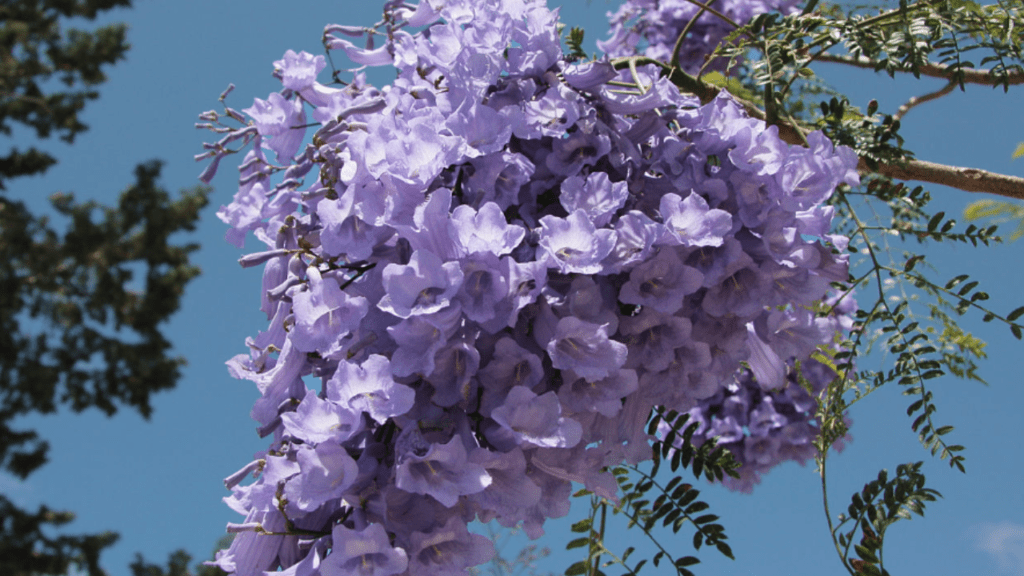
Jacaranda Tree Planting: A Step-by-Step Guide for Beginners
Jacaranda tree planting is an exciting endeavor for gardeners looking to add a burst of color to their landscape. Known for their stunning purple-blue flowers and feathery foliage, Jacaranda trees not only beautify your surroundings but also provide shade and a tropical ambiance. Whether you’re a seasoned gardener or a beginner, planting a Jacaranda tree requires specific steps to ensure healthy growth and vibrant blooms. This guide will walk you through everything you need to know about Jacaranda tree planting, from selecting the right location to long-term care tips.
Table of Contents
ToggleUnderstanding the Jacaranda Tree
Overview of the Jacaranda tree species (Jacaranda mimosifolia).
The Jacaranda tree, also known as Jacaranda mimosifolia, is a stunning tree species known for its vibrant purple-blue flowers and feathery foliage. Native to South America, these trees have become popular in other parts of the world for their striking beauty and ability to thrive in warm climates. They are often used as ornamental trees in gardens and parks, adding a tropical ambiance to their surroundings. Jacaranda trees can grow up to 50 feet tall and have a spread of 30-40 feet, making them a majestic addition to any landscape. Their flowers bloom in clusters and cover the tree, creating a stunning display of color. The tree’s leaves are delicate and fern-like, adding to its overall visual appeal. Jacaranda trees are deciduous, meaning they shed their leaves in the winter and produce new foliage in the spring. They are relatively low-maintenance trees and are known to attract pollinators such as bees and butterflies. Overall, the Jacaranda tree is a beautiful and eye-catching addition to any garden or landscape.
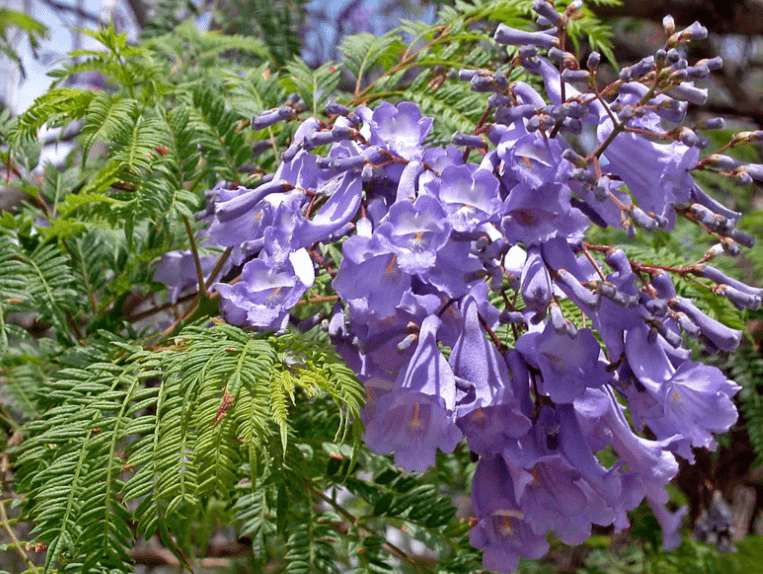
Choosing the Right Location
Importance of selecting the right spot for planting.
When it comes to planting a tree, selecting the right spot is crucial for its growth and overall health. For Jacaranda trees, it’s important to plant them in a location that receives full sun and has well-drained soil. These trees thrive in warm, tropical climates and need plenty of sunlight to bloom and grow properly. Additionally, it’s important to consider the size of the tree at maturity and ensure that there is enough space for it to spread out without interfering with other plants or structures. By choosing the right location for planting a Jacaranda tree, you can ensure that it will thrive and enhance the beauty of your garden or landscape.
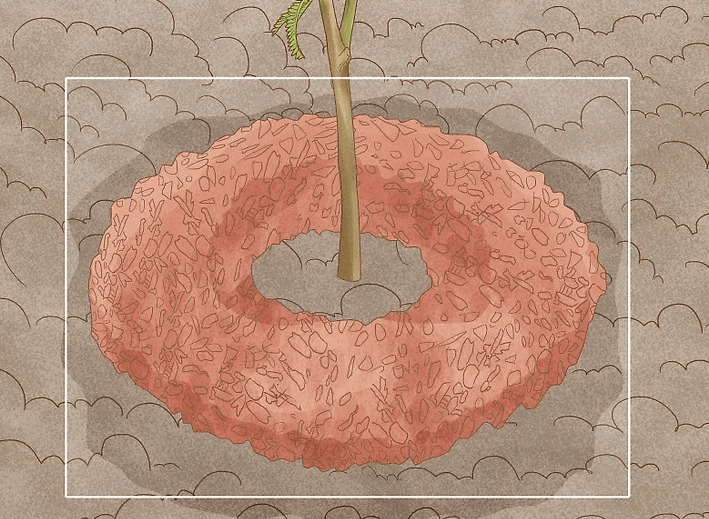
Factors to consider: sunlight, soil type, and space for growth.
When planting a Jacaranda tree, it is important to carefully consider the factors that will contribute to its growth and health. Sunlight is essential for these trees, so it is important to choose a location that receives full sun and has well-drained soil. Jacaranda trees thrive in warm, tropical climates and need plenty of sunlight to bloom and grow properly. Additionally, it is important to consider the size of the tree at maturity and ensure that there is enough space for it to spread out without interfering with other plants or structures. By carefully selecting the right location for planting a Jacaranda tree, you can help ensure its success and enhance the beauty of your garden or landscape. Overall, the Jacaranda tree is a beautiful and eye-catching addition to any outdoor space.
Preparing the Soil
Step-by-step instructions on preparing the soil before planting.
Before planting any tree, it is important to carefully prepare the soil to ensure the best possible growing conditions. When it comes to planting a Jacaranda tree, there are a few key steps to take in order to prepare the soil. Firstly, it is important to consider the amount of sunlight the area receives. Jacaranda trees thrive in full sun, so choosing a location that receives plenty of sunlight is essential for their growth and blooming.
Next, it is important to consider the type of soil in the planting area. Jacaranda trees prefer well-drained soil, so if the soil in the chosen location is not well-drained, it may be necessary to amend the soil with organic matter such as compost or peat moss to improve its drainage and fertility.
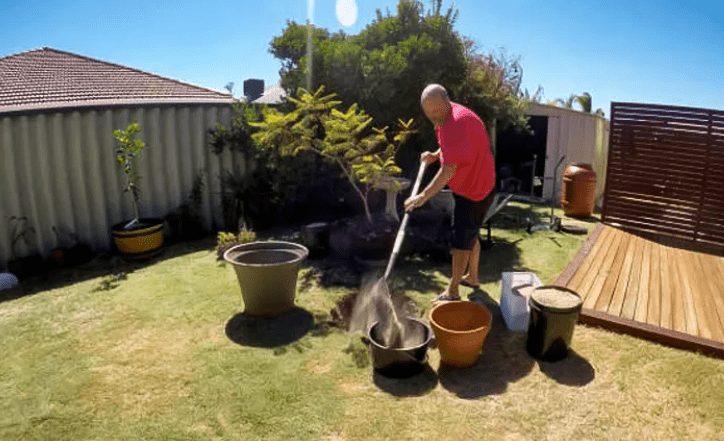
Once the soil has been prepared, it is important to consider the space for the tree to grow. Jacaranda trees can grow to be quite large, so it is important to ensure that there is enough space for the tree to spread out without interfering with other plants or structures.
Overall, by carefully preparing the soil before planting a Jacaranda tree, you can help ensure its success and enhance the beauty of your garden or landscape.
Importance of soil amendments like compost or fertilizers.
Soil amendments like compost and fertilizers are essential for maintaining healthy and fertile soil for plant growth. Compost is a rich source of organic matter that helps to improve soil structure, fertility, and water retention. It also provides important nutrients to plants, promoting healthy growth and development. Fertilizers, on the other hand, are specifically designed to provide plants with essential nutrients such as nitrogen, phosphorus, and potassium. By adding these soil amendments, you can improve the overall health and quality of your soil, leading to better plant growth and productivity. In addition, these amendments can also help to improve soil pH and reduce the risk of nutrient deficiencies. Overall, incorporating soil amendments like compost and fertilizers into your gardening routine is vital for maintaining healthy, nutrient-rich soil that supports robust plant growth.
Tips on testing soil pH and making adjustments if necessary.
Testing soil pH is an important step in maintaining healthy and fertile soil for plant growth. You can start by using a soil pH testing kit, which can be purchased at most garden centers. Once you have your kit, take a small sample of soil from different parts of your garden and follow the instructions on the kit to test the pH level. The ideal pH level for most plants is between 6.0 and 7.0. If your soil pH is too low or too high, you can make adjustments by adding lime to raise the pH or sulfur to lower it. It’s important to follow the recommended amount of amendments based on your soil test results to avoid overdoing it. Additionally, incorporating soil amendments like compost and fertilizers can help to improve soil pH and provide essential nutrients to plants. By regularly testing the soil pH and making necessary adjustments, you can ensure that your plants have the best possible growing conditions for healthy and robust growth.
Planting the Jacaranda Tree
Focus Keyword Integration: “Follow these steps for ‘Jacaranda Tree Planting: A Step-by-Step Guide for Beginners’ to ensure your tree gets off to a healthy start.”
Follow these steps for Jacaranda tree planting to ensure your tree gets off to a healthy start. First, start by choosing the right location for your tree. Jacaranda trees thrive in full sun and well-draining soil, so find a spot in your garden that meets these requirements. Next, dig a hole that is twice the width of the tree’s root ball and the same depth. Gently remove the tree from its container and place it in the hole, making sure the top of the root ball is level with the ground. Backfill the hole with soil, gently firming it around the tree to remove any air pockets. Water the tree thoroughly after planting, and continue to water regularly, especially during the first year as the tree establishes its roots. Finally, consider adding a layer of mulch around the base of the tree to help retain moisture and suppress weeds. Following these steps will ensure that your Jacaranda tree has the best possible start in your garden.
Detailed instructions on digging the hole, placing the tree, and backfilling.
To plant a Jacaranda tree, you’ll want to choose a location in your garden that receives full sun and has well-draining soil. Once you’ve found the perfect spot, it’s time to dig a hole for the tree. The hole should be twice the width of the tree’s root ball and the same depth. Gently remove the tree from its container and place it in the hole, making sure the top of the root ball is level with the ground.
After placing the tree in the hole, it’s important to backfill the hole with soil, gently firming it around the tree to remove any air pockets. Water the tree thoroughly after planting, and continue to water it regularly, especially during the first year as the tree establishes its roots.
To further support the tree’s growth, consider adding a layer of mulch around the base of the tree to help retain moisture and suppress weeds. Following these steps will give your Jacaranda tree the best possible start in your garden and help it thrive for years to come.
Watering and Mulching
Guidelines on watering schedules for newly planted Jacaranda trees.
After planting a Jacaranda tree, it’s important to establish a watering schedule to ensure its proper growth and development. For the first few weeks after planting, the tree should be watered regularly to help it establish its roots. Water the tree deeply, making sure to soak the entire root ball. After the first few weeks, you can gradually reduce the frequency of watering, but continue to monitor the soil moisture and adjust as needed. During hot and dry weather, it may be necessary to increase the frequency of watering to ensure the tree stays properly hydrated. Adding a layer of mulch around the base of the tree can help retain moisture and reduce the need for frequent watering. However, it’s important to avoid overwatering, as this can lead to root rot. By following these guidelines, you can help your newly planted Jacaranda tree thrive and become a beautiful addition to your garden.
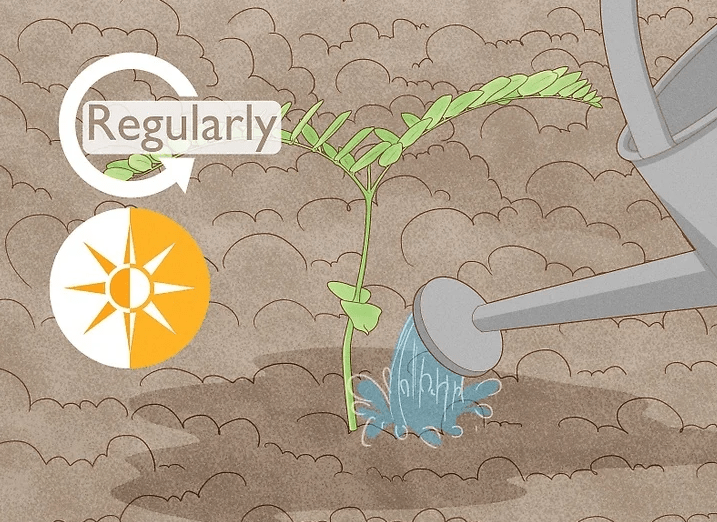
Importance of mulching and how to apply it correctly.
Mulching is important for the health and growth of trees and plants. It helps to retain moisture in the soil, regulate soil temperature, and suppress weed growth. To apply mulch correctly, start by clearing the area around the tree of any existing weeds or debris. Then, spread a layer of mulch around the base of the tree, making sure to leave a few inches of space around the trunk to prevent moisture from accumulating and causing rot. The mulch should be spread evenly and be about 2-4 inches deep. It’s important to regularly check the mulch and add more as needed to maintain the proper depth. By following these steps, you can ensure that your tree receives the benefits of mulch while also preventing any potential issues from over-mulching.
Tips on preventing overwatering and root rot.
Overwatering and root rot can be damaging to the health of your plants and trees. To prevent overwatering, it’s important to monitor the soil moisture and only water when the top inch of soil is dry. Additionally, using well-draining soil and pots with drainage holes can help prevent water from accumulating around the roots. When watering, it’s best to water deeply and infrequently to encourage deep root growth and prevent shallow roots that are more susceptible to rot. Adding a layer of mulch around the base of the tree can also help retain moisture in the soil and regulate soil temperature, but it’s important to apply the mulch correctly. Clear the area around the tree of any existing weeds or debris before spreading a layer of mulch, leaving a few inches of space around the trunk to prevent moisture from accumulating and causing rot. Regularly checking the mulch and adding more as needed will help maintain the proper depth and prevent any potential issues from over-mulching. With these tips, you can prevent overwatering and root rot while promoting the health and growth of your plants and trees.
Caring for Your Jacaranda Tree
Ongoing care tips: fertilizing, pruning, and pest control.
Caring for your Jacaranda tree requires ongoing care to ensure its health and growth. Fertilizing is important to provide essential nutrients for the tree, especially during the growing season. Choose a balanced fertilizer and follow the instructions for application. Pruning is another important aspect of care, as it helps shape the tree and remove dead or diseased branches. Regular pruning also encourages healthy growth and flowering. Lastly, pest control is crucial to protect the tree from pests and diseases. Regularly inspect the tree for any signs of pests or diseases and take appropriate measures to control them. By following these ongoing care tips, you can ensure the health and beauty of your Jacaranda tree for years to come.
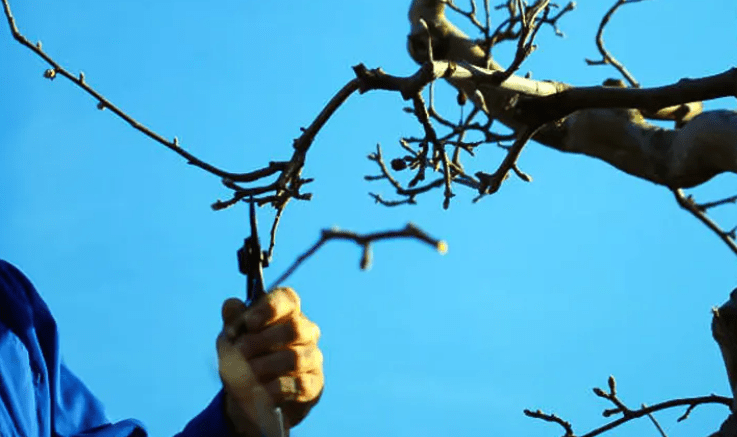
How to support young trees as they establish themselves.
Supporting young trees as they establish themselves is crucial to their long-term health and growth. Fertilizing is important to provide essential nutrients for the tree, especially during the growing season. Choose a balanced fertilizer and follow the instructions for application to ensure that the tree receives the right amount of nutrients. In addition to fertilizing, pruning is another important aspect of care. Pruning helps shape the tree and remove dead or diseased branches. Regular pruning also encourages healthy growth and flowering. Lastly, pest control is crucial to protect the tree from pests and diseases. Regularly inspect the tree for any signs of pests or diseases and take appropriate measures to control them. By following these ongoing care tips, you can ensure the health and beauty of your young trees for years to come.
Common issues and how to address them.
It’s important to choose a balanced fertilizer for your trees and to follow the instructions for proper application to ensure that the tree receives the right amount of nutrients. This will help promote healthy growth and development. Additionally, pruning is another important aspect of care for trees. Pruning helps to shape the tree, remove dead or diseased branches, and encourages healthy growth and flowering. Regular pruning is essential to maintaining the overall health and appearance of the tree. Lastly, pest control is crucial to protect the tree from pests and diseases. Regularly inspect the tree for any signs of pests or diseases and take appropriate measures to control them. By following these ongoing care tips, you can ensure the health and beauty of your young trees for years to come. These are some common issues that can arise with tree care, but by addressing them with proper care and attention, you can help your trees thrive.
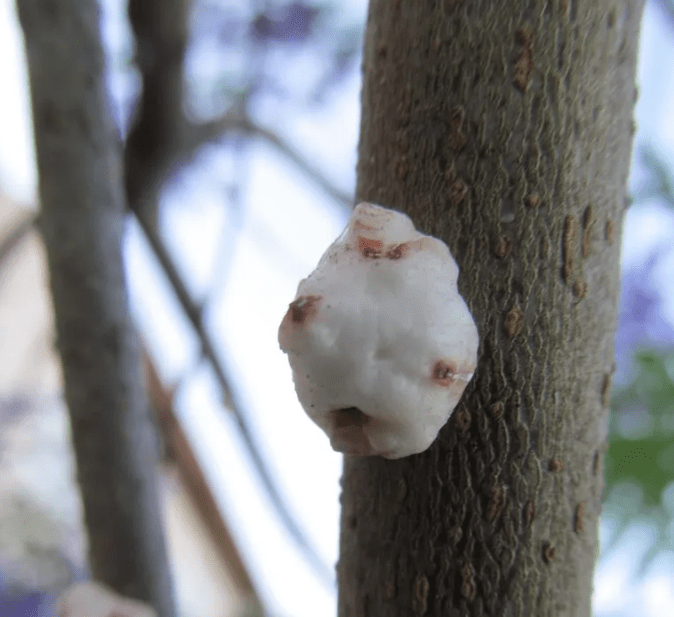
Conclusion
In conclusion, planting and caring for jacaranda trees can be a rewarding experience, but it requires careful attention to detail and patience. By following the step-by-step guide provided in this post, beginners can successfully plant and care for jacaranda trees and enjoy their beauty in their own yard. Remember to choose the right location, provide proper watering and fertilization, and maintain regular care to ensure the health and growth of your jacaranda trees. Happy planting!
Frequently asked questions And Answer
The best time to plant a Jacaranda tree is in the spring, after the last frost has passed. This will give the tree plenty of time to establish its roots before the hot summer months.
Jacaranda trees thrive in full sunlight, so it’s best to plant them in a spot that receives at least 6-8 hours of direct sunlight each day.
.
Jacaranda trees prefer well-draining soil with a slightly acidic pH. It’s important to avoid planting them in soil that is too compact or waterlogged.
Water the tree deeply once a week, especially during the first year after planting. After the tree has become established, it will be more drought-tolerant and will only need watering during dry periods.
Jacaranda trees can grow up to 40-50 feet tall and 30-40 feet wide, so it’s important to give them plenty of space to grow.
Jacaranda trees are relatively low-maintenance, but it’s important to prune them regularly to maintain their shape and remove any dead or damaged branches.
Jacaranda trees typically start blooming when they are 3-5 years old. Once they start blooming, they will produce beautiful purple flowers each spring.
Jacaranda trees thrive in warm, subtropical climates and may not survive in areas with harsh winters or prolonged periods of freezing temperatures. It’s best to check if the climate in your area is suitable for growing Jacaranda trees before planting.
